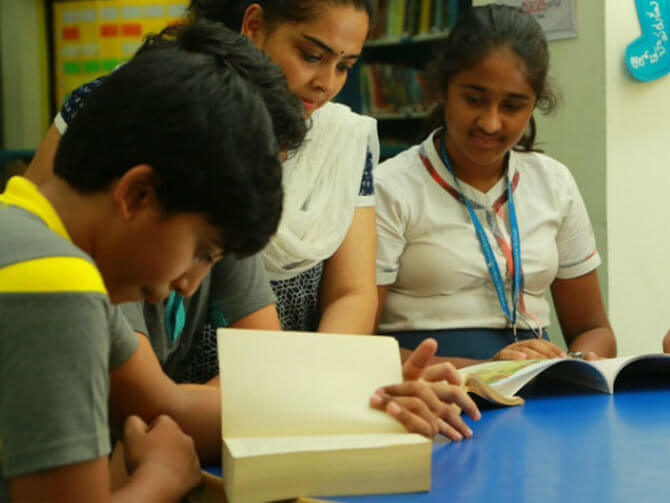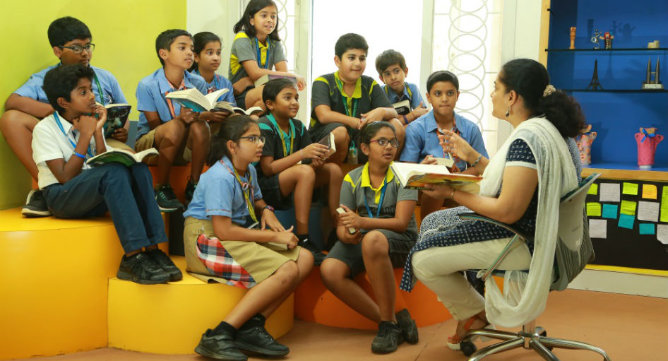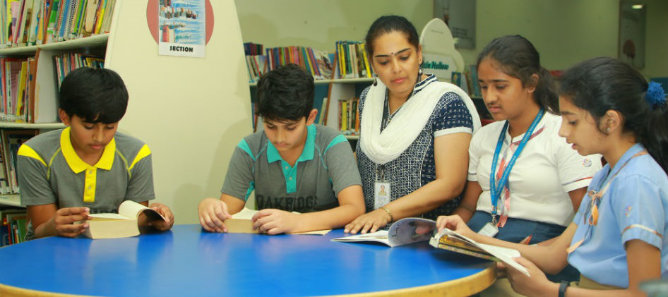Reviving the lost art of reading books
- 17 August 2018

When students leave classrooms there is a hope that they take with them a love of reading, not because there are the coursework demands, but because students should be lifelong readers! An observant and informed teacher is the panacea to motivate young readers! Informed educator uses a variety of tools and resources to cultivate readers. And to nurture young readers, fostering an environment that supports literacy not only encourages relationships and promotes reading as a social activity but helps share ideas and connections with partners and in literature circles.
And as such a library is a hub of learning, reading, research, discussion and collaboration where a teacher-librarian collaborates with classroom teachers to ensure that the collection in the library supports the units of inquiry. Students are motivated by choice. To optimize this choice within the classroom library, educators estimate texts that cover multiple topics, themes, and genres.

Books engage students in the social, collaborative exchange of ideas. Books also engage students in activities that allow them to approach problems from different vantage points, redefining, creative thinking in order to develop new viewpoints. Basically, students learn in groups to make meaning out of information. Not only do they need to make meaning out of the information but in order to actually perform they need to be able to share that meaning with others. Learners share a common purpose, depend upon each other and are accountable to each other for their success.
In today’s world, people are constantly on the lookout for a change, a shift from the mundane, a shift for the better, a shift that will make us think differently and will help us grow. Sometimes, a change brings about the direction to the trajectory of our mind and fosters the element of imagination and creativity and becomes the much-required energy booster. Given the current status that technology and gadgets occupy in the lives of our children, it is much needed now than ever before to reintroduce to our students the lost art of reading and the pleasures of imagination and make belief. Stories allow students to visualize their fantasies, dream of unimaginable places, and don the hat of their favourite character. Thus, reading sets the stage for imagination, creativity, and thought. There are different kinds of readers – snail readers, bull readers and cheetah readers (terms are taken from ‘Hungry to Read’ by Arthi Sonthalia) and then there are non-readers. As mentors, a teacher’s role is to ensure that every student moves up the rung and into the next category of readers, and also kindle the non-readers to make an attempt to read.
Not wanting to read can be attributed to various reasons – lack of interest, lack of confidence, or simply the lack of curiosity to name a few. Some of these can be tackled easily whereas some need a plan to be put in place.
Given the age group of the students we are dealing, it becomes imperative for us to ensure that the environment at the library is vibrant and exciting to the students. A splash of colour, a board with pictures of both students and teachers reading books, a friendly smile and an inviting voice go a long way in making the student feel warm and welcome.
Once the initial battle is won and the students find it interesting to come to the library, it is time to find out what kind of stories they would like to read. This connection can easily be made in tandem with the class teacher and she can also help assess the reading level of the student.

Now is the perfect time to work with the non-readers. The attention of these kids can be drawn by encouraging activities in the library; organizing a book hunt based on clues, challenging students to find a book/author/character for every letter of the alphabet, associating cartoon characters on television with the book or the series in the library, having mystery readers read books to the students, and creating a cloud of excitement and thrill for the readers to look forward to. Very often, we can help the child overcome his/her lack of confidence by simply talking to him/her. Some students have never read before and are unsure about where or how to start. Helping them identify a genre can be useful at this point and then helping them choose a book that suits their reading level can get them started on reading. I believe that there is no correlation between the age of the student and the level of reading that they must fit into. It is all about what they are comfortable reading. The idea here is to ensure that children take to reading what they like by themselves rather than developing an aversion to it. Children associate better with characters they recognize and emulate characters they can relate to. For example, Simba, from the ‘The Lion King’, is a perfect example of a risk-taker as he takes upon himself to save his clan; Rusty from the Ruskin Bond series shows integrity when he does not give up on his friends; and then there is Noddy – whose curiosity paves the path to his adventures. How will children learn about these people and their character traits? Their stories and adventures take you places and let you experience their world through their eyes. This is an important aspect of growing up as they learn to see the world through different lenses.